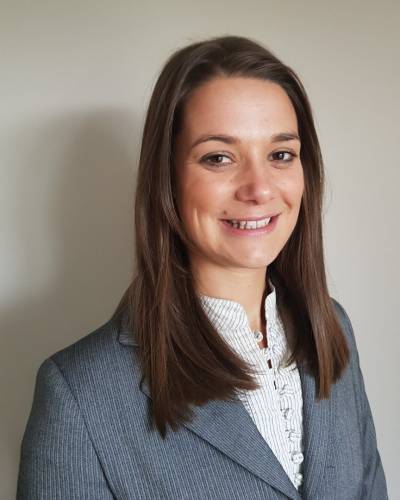
“Heifers are the lifeblood of any suckler herd” says Sarah Pick, National Knowledge Exchange Manager for AHDB Beef & Lamb. Sarah completed a Nuffield Scholarship in 2019 where she travelled the globe looking at heifer replacement strategies. During her presentation at the 2021 British Cattle Breeders conference, she told delegates “The average UK suckler herd is losing £135 per cow before subsidies” However, Sarah pointed out that compared to other countries, relatively speaking our returns are on a par; It’s our costs that let us down. “UK land values and climate mean more cattle have to be housed and our labour costs are higher” explained Sarah. However, the main difference in profitability noted by Sarah whilst undertaking her studies, was the inefficiencies in management and low uptake of technology seen in the UK compared to our global competitors.
Calving suckler heifers at 2 years of age has been common place all over the world since the 1970’s, yet only 35% of UK suckler farmers calve their heifers at 2 years. Sarah told BCBC members that she had calculated that calving at 2 years results in a £600 per heifer saving due to increased production, with 2 year old heifers producing more calves and more calf weight over their lifetime. It has also been found that heifers calving at 2 years, when managed well, stay in the herd longer. Sarah stated “Although the benefits of calving at 2 years old are widely accepted in the UK, it does require more management” Whilst completing her Nuffield Scholarship, Sarah spoke to farmers across the UK to see what the perceived barriers to calving at 2 years were. Farmers felt that achieving target breeding weights was a challenge and often resulted in difficult calvings for heifers. These issues hindered the success of rebreeding for a second time. Sarah said “When visiting suckler farmers in other countries, I wanted to find out what they were doing to minimise these barriers to calving at 2 years” Her findings, by her own admission, were not ground breaking and centred around getting the basics of heifer production right; “Genetics” she said “are the foundations of this.”
Sarah questions the profitability of the strong terminal focus that has been the centre of UK cattle breeding for some time. “Dr Bart Lardner, from the University of Saskatchewan, Canada states that maternal genetics are worth 5 times that of terminal genetics” explained Sarah “Our terminal focus has heavily influenced maternal size which we know to be highly correlated with maintenance costs.” Sarah referenced research done by AHDB in which 680kg was found to be the optimum weight for a suckler cow. Cattle weighing more than 700kg need not only more feed for maintenance, but higher quality feed. “With increased size comes calving difficulties, vet and labour costs, delayed post-partum anoestrus and subsequently a prolonged calving period.” she said.
As part of her Nuffield Scholarship, Sarah visited suckler farmers in USA. They were focussing on 5 genetic traits of economic importance; Fertility, Milk, weight, conformation, hardiness and disposition, with one farmer that she visited achieving a 93% conception rate over a 5 week breeding period. But with only 30% of UK suckler farmers using EBVs when choosing a bull to breed replacement heifers from “it was the responsibility of the industry to communicate the benefits of using genetic tools and make them more user friendly for producers.”
Dam selection was the next key area of focus for Sarah’s studies. “Dam selection is just as important as the bull” she said. But with only a small number of pedigree female animals having EBVs to aid selection, other management data should be looked at. “Heifers from cows that have calved on their own, early in the calving season and have weaned a calf weighing 45% or more of their own body weight should be top of the breeding list” she said. Other areas to look at include structural soundness, teat size and temperament. “Bulling heifers should reach 65% of mature weight at 14 months of age” Sarah said “This ensures that they’ve reached puberty and will have been likely born at the start of the breeding season from your most fertile cows” Sarah explained that correct nutrition was absolutely essential in achieving bulling weights as well as ensuring a return to cycling and conception following her first calf.
“Following my Nuffield study tour, my recommendations to the industry are to create a breeding plan tailored to your herd and what you want to achieve and use EBVs as a tool for genetic selection.” said Sarah “There needs to be more focus, as an industry, on maternal EBVs. Genetics, along with nutrition and selection are the foundations of calving at 2 years old.”
Sarah's Nuffield Report can be viewed here